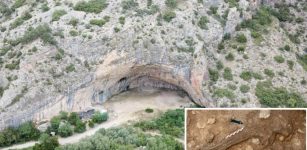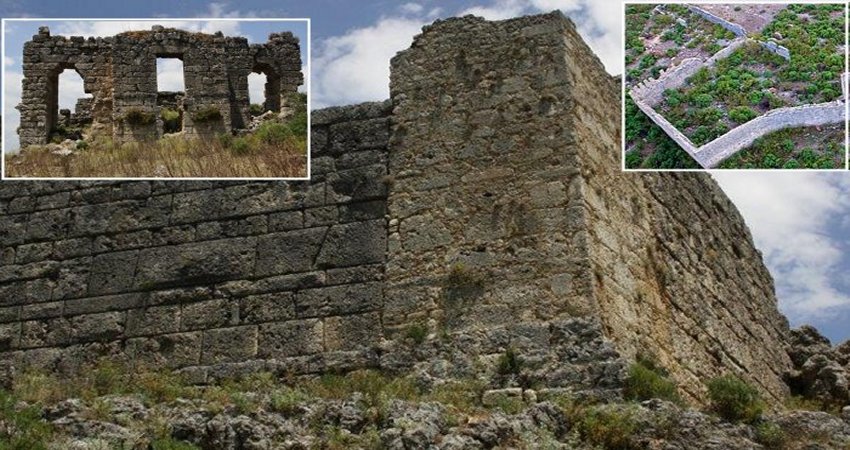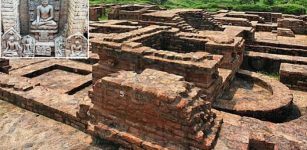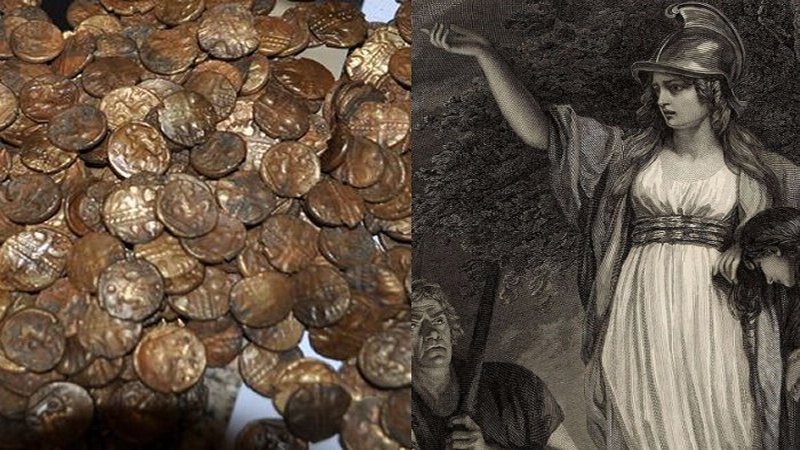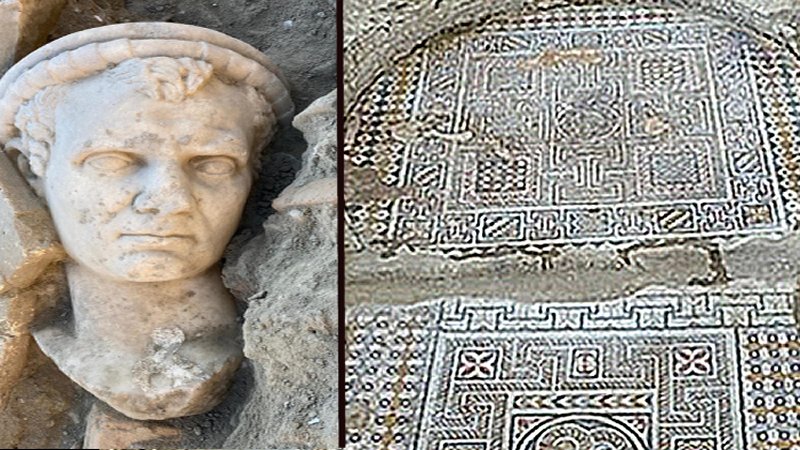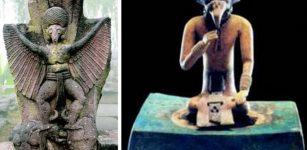Berserkers: Icelandic Viking ‘Mad Warriors’ In The Army Of God Odin
A. Sutherland – MessageToEagle.com – Icelandic Viking warriors known as ‘berserkers’ (in Old Norse: ‘berserkr’) were feared by enemies and even their battle companions.
These warriors – half-naked and covered in furs – entered into combat in trance, possessed by hatred and blind fury, even without armor or protection. The berserkers did not fear pain and death and they had a strong desire to kill.
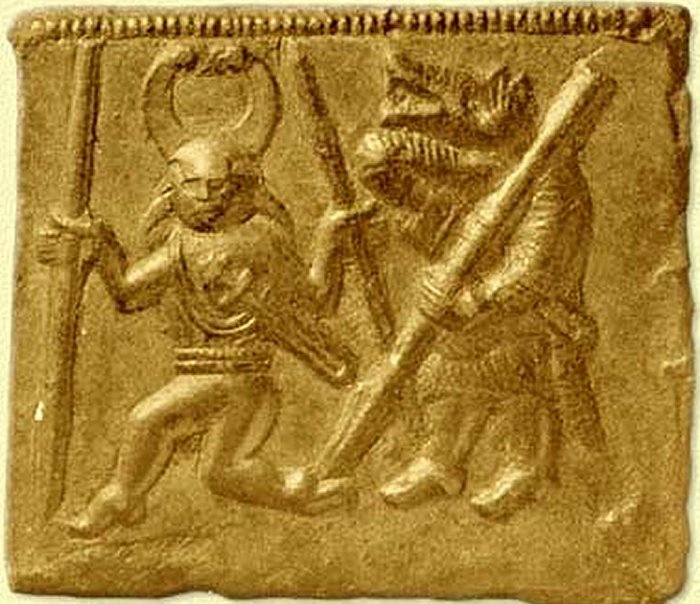
How did they get the spirit of reckless attack in order to fight madly as they did?
The berserkers are manly known from Icelandic literature but the most cited source is the “Ynglinga saga” dated to 1220 AD , In his work, Snorri Sturlusson describes berserks as ‘mad fighters’ without body armor:
“Woden’s [Odin’s] men went without hauberks and raged like dogs or wolves. They bit their shields and were strong like bears or bulls. They killed men, but neither fire nor iron hurt them…”
See also:
Legendary Beowulf: Strong And Courageous Prince Of Geats Fighting Grendel And Dragon Monsters
Were The Viking Berserkers True Warriors Or Drug Addicts Fighting In Trance?
Famous Viking Ragnar Lodbrok – Legendary Fearless Sea-King Of The North
Mysterious Jomsvikings: Fearless Scandinavian Warrior-Brotherhood
Vikings: Facts And History About The Tough Norse Seafaring People
What the word ‘berserker’ (“björnsärk”) means is uncertain, but one theory proposes reasonable explanation that the word is related to Odin warrior’s habit of wearing a coat (Old Norse: “serkr”) made from the pelt of a bear (Old Norse: ber-) during their furious battles.
Ivar The Boneless Was A Berserker
Odin’s feared berserkers became a model for later generations of warriors that were insanely brave and feared nothing.
One example can be Ragnar Lodbrok’s son Ivar Ragnarsson widely known as Ivar the Boneless (794-873).
He was exceptionally violent and cruel Viking warlord, reputed to be a berserker.
He was reported to serve as a warrior in Denmark where he was said to lead an army of Berserker warriors.
In the Sagas, Ivar the Boneless is described as being more like a giant than an ordinary man.
His powerful arms were able to carry a bow that was much stronger than those used by other warriors, and with heavier arrows.
It happens that not everything what ancient myths and legends tell, seems to be only a fantasy.
During an excavation at the churchyard of St. Wystan’s in Repton in Derbyshire, in the East Midlands of England, archaeologists unearthed a the skeleton of a 9-foot tall Viking warrior. This discovery made them believe, the remains belong to Ivar the Boneless. Ancient historical sources confirm that in 873, the Great Viking Army led by Ivar Ragnarsson (“the Boneless”) spent the winter in Repton.
Also the Saga of Ragnar Lodbrok, Ivar’s father, states that Ivar the Boneless was buried in England.
Harald Hardrada Was A Famous Viking Warrior And A Berseker
Another reputed warrior who was believed to be the berseker, was Harald Hardrada “(hard ruler”) officially Harald III Sigurdsson (1015-1066), one of the most famed Viking leaders, who participated in the Battle of Stiklestad in 1030 AD at the age of 15. Later (but before Hardrada became king of Norway) his Viking army of warriors were employed as protectors of the emperor and Harald became military commander in Kievan Rus’ and of the Varangian Guard in the Byzantine Empire.
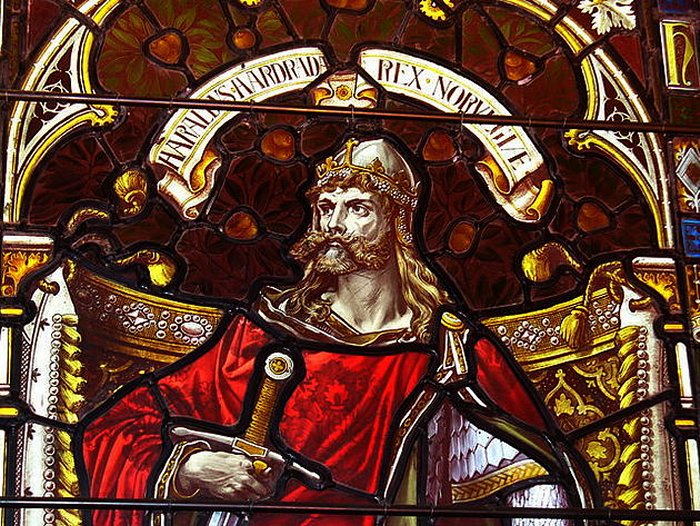
Old customs and beliefs in powerful berserkers also survived in the famous medieval legend of Beowulf. Beowulf, a ‘prince of the Geats’ of southern Sweden, arrived with a small group of warriors ready to get rid of Grendel, an evil man-eating monster that is half-man and half-fiend.
To meet the monster on its own terms, he threw off his helmet, (“hauberk”) and sword, but still his strength was that of thirty men, and he killed Grendel by pulling off one of the monster’s arms.
However, in its later, more Christianized version, mighty Beowulf trusts in God’s power, not in strength coming from his altered state of mind, as did Odin’s brave warriors in the past.
Written by A. Sutherland – MessageToEagle.com Staff Writer
Copyright © MessageToEagle.com All rights reserved. This material may not be published, broadcast, rewritten or redistributed in whole or part without the express written permission of MessageToEagle.com
Expand for references



